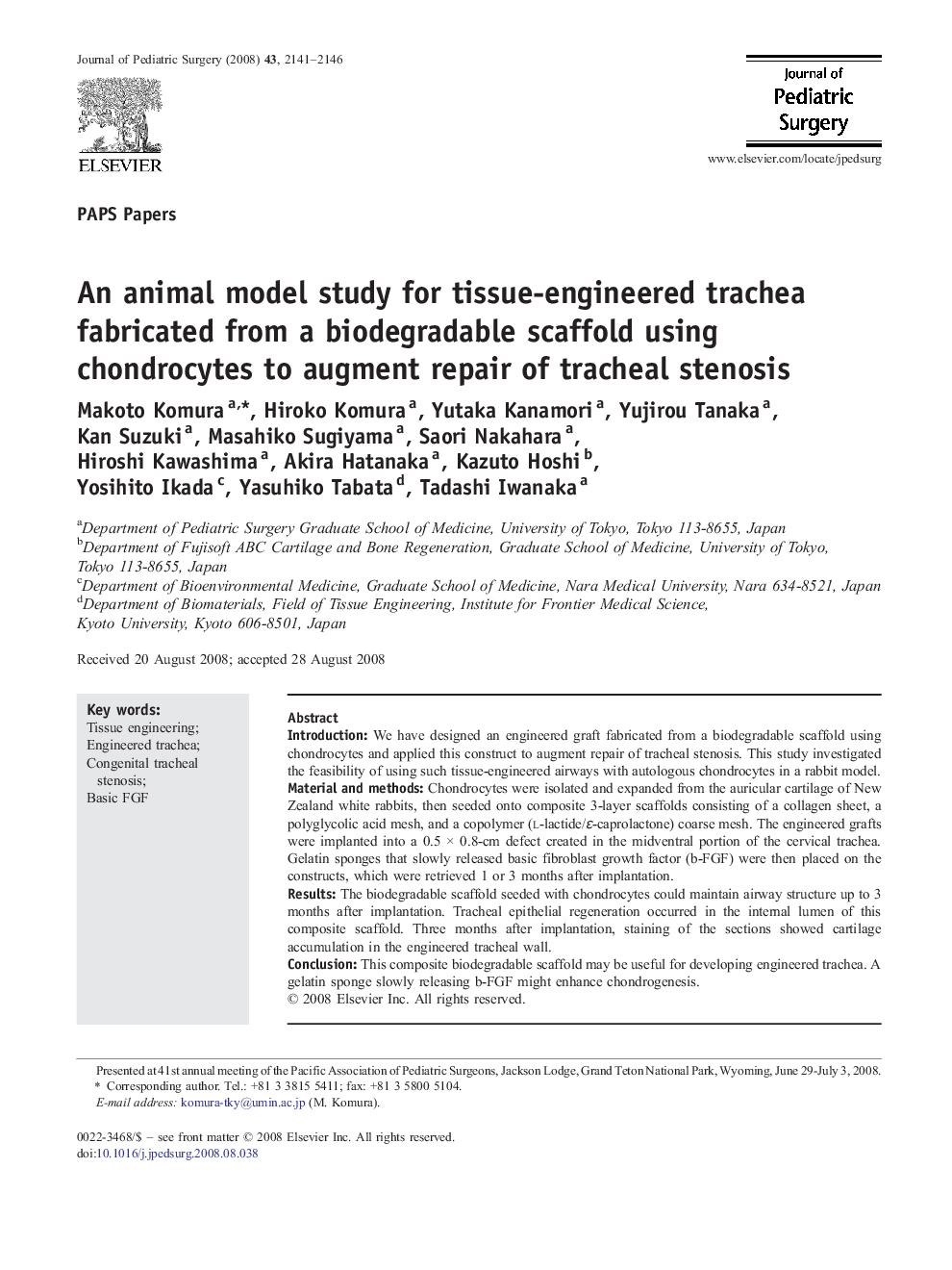| Article ID | Journal | Published Year | Pages | File Type |
|---|---|---|---|---|
| 4158073 | Journal of Pediatric Surgery | 2008 | 6 Pages |
IntroductionWe have designed an engineered graft fabricated from a biodegradable scaffold using chondrocytes and applied this construct to augment repair of tracheal stenosis. This study investigated the feasibility of using such tissue-engineered airways with autologous chondrocytes in a rabbit model.Material and MethodsChondrocytes were isolated and expanded from the auricular cartilage of New Zealand white rabbits, then seeded onto composite 3-layer scaffolds consisting of a collagen sheet, a polyglycolic acid mesh, and a copolymer (l-lactide/ɛ-caprolactone) coarse mesh. The engineered grafts were implanted into a 0.5 × 0.8-cm defect created in the midventral portion of the cervical trachea. Gelatin sponges that slowly released basic fibroblast growth factor (b-FGF) were then placed on the constructs, which were retrieved 1 or 3 months after implantation.ResultsThe biodegradable scaffold seeded with chondrocytes could maintain airway structure up to 3 months after implantation. Tracheal epithelial regeneration occurred in the internal lumen of this composite scaffold. Three months after implantation, staining of the sections showed cartilage accumulation in the engineered tracheal wall.ConclusionThis composite biodegradable scaffold may be useful for developing engineered trachea. A gelatin sponge slowly releasing b-FGF might enhance chondrogenesis.
